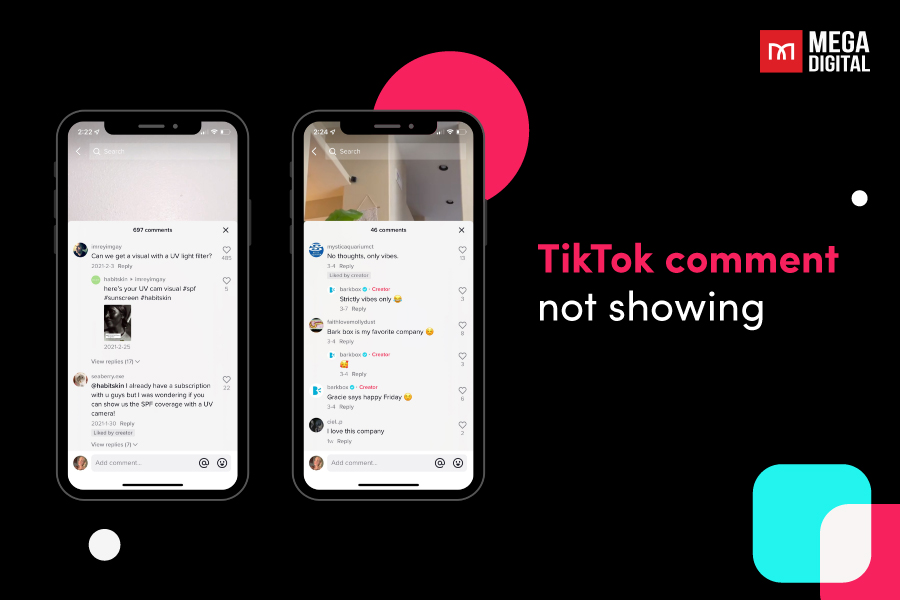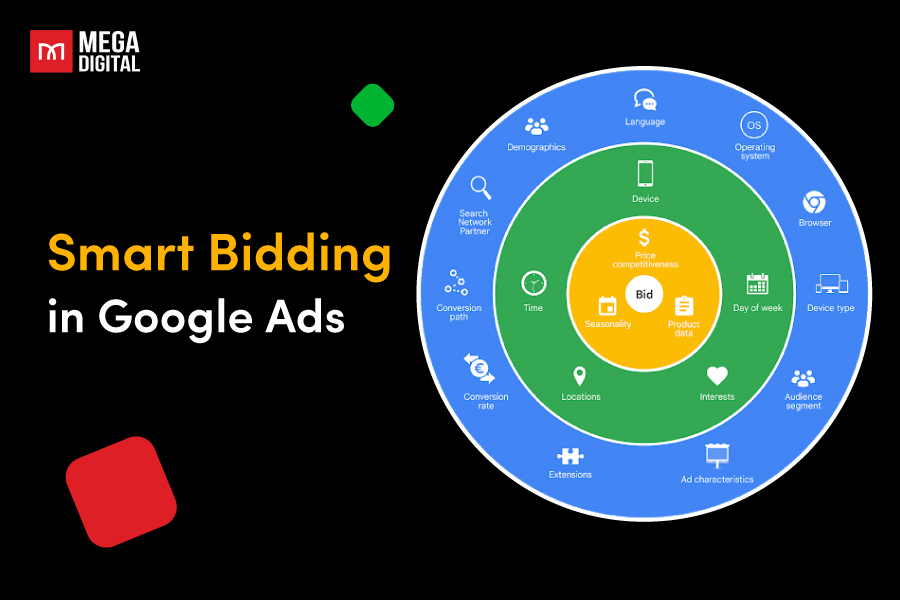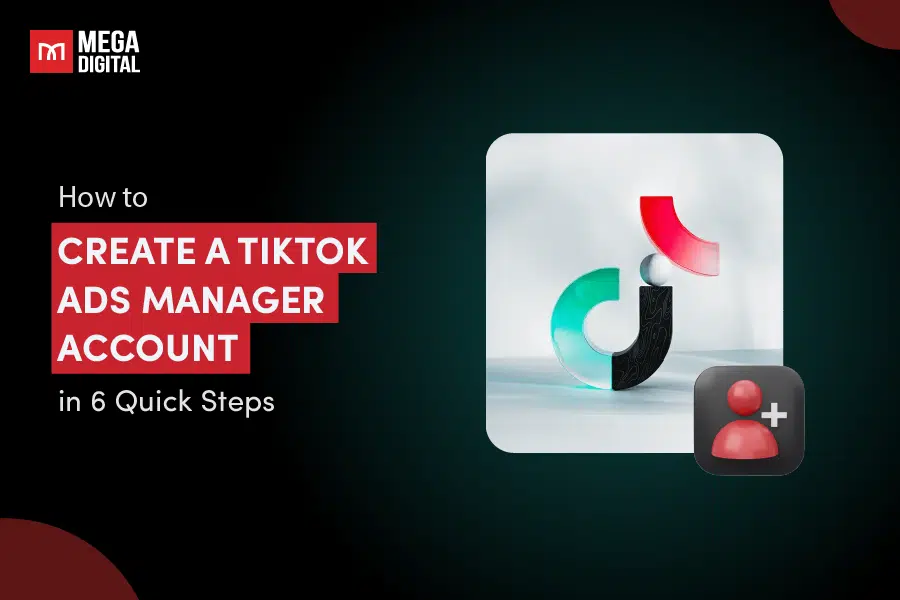Are you an educator aiming to establish a powerful personal brand on TikTok and generate income from the platform? In this article, I’ll show you how to broaden your audience and share essential tips and strategies for thriving on TikTok. With the right approach, TikTok can help you achieve your business target.
- Why Use TikTok for Education?
- Challenges of using TikTok for Education
- Strategies for Using TikTok for Education
- 1. Develop a Content Strategy Aligned with Educational Goals
- 2. Build a Brand Identity Around Educational Value
- 3. Segment Your Audience and Tailor Content
- 4. Establish Partnerships and Collaborations
- 5. Create Scalable Learning Programs
- 6. Explore Monetization Strategies Aligned with Educational Content
- Best TikTok Ad Types for Promoting Education
- How to Optimize Educational Content on TikTok?
- Case studies: Famous education channel on TikTok
Why Use TikTok for Education?
With its extensive audience and high engagement, TikTok is a great platform for educators to deliver their content—let’s explore why it’s perfect for making education more accessible.
Engagement with a Younger Audience
As an educator, your goal is for your content to reach and resonate with as many learners as possible, and TikTok Ads can help you achieve that. With more than 1.94 billion active users each month globally, including 41% of users aged 16 to 24, the platform gives teachers a huge opportunity to reach a large young audience. Targeting a young audience is important because they are more open to learning new things, actively engage with content, and are highly responsive to fresh ideas.
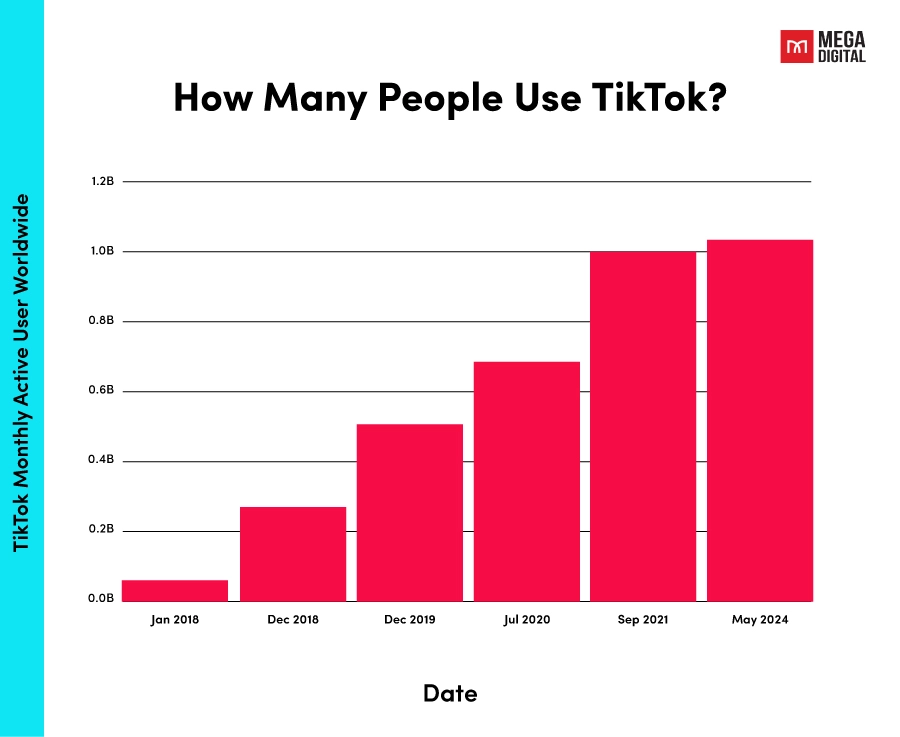
TikTok Education Program
TikTok’s video format allows for creative and dynamic advertisements that make educational content more engaging. Interactive features like challenges, polls, and filters further enhance learning experiences. Additionally, through its ‘EduTok Program,’ TikTok helps first-time internet users access high-quality educational content from popular creators.
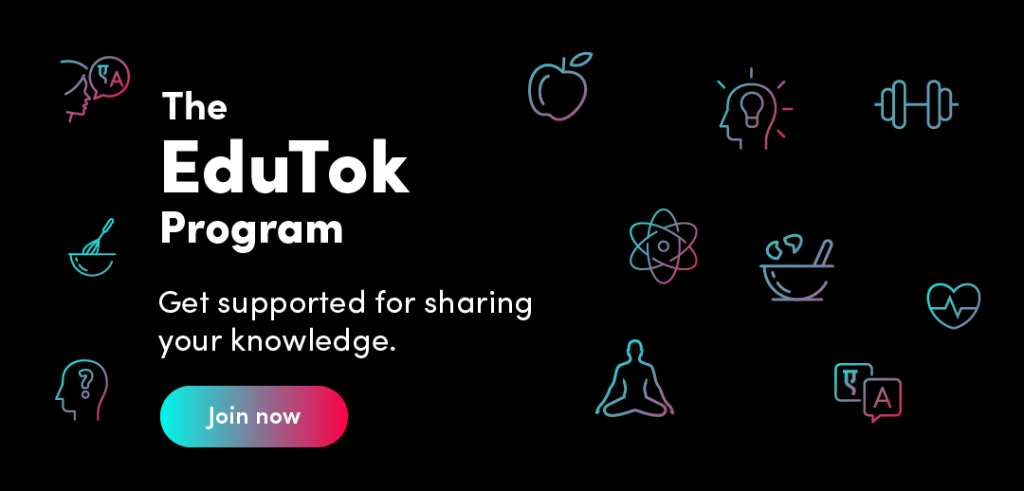
Targeted Advertising
TikTok’s algorithm targets users based on demographics, interests, behavior, device info, search history, engagement patterns, and content preferences to deliver relevant content and ads.
For example, if you want to promote a new English course on TikTok, you can target ads based on:
- Demographics: Age and location, like students or young professionals in specific cities.
- Interests: Users interested in learning English or education.
- Behavior: Users who frequently watch educational content or English tips.
- Search History: Users who have searched for English courses.
- Engagement: Users who interact with language learning videos.
- Content Preferences: Users who create or engage with English learning content.
>>> Read more: TikTok Ads targeting options: What beginners need to know?
Cost-Effective Promotion
TikTok ads offer a cost-effective way to promote educational content, often being more affordable than platforms like Google or Facebook due to TikTok’s newer status and lower competition. High user engagement and precise targeting options make it an ideal choice for educators looking to maximize their reach without overspending. Based on my experience, I recommend starting with a daily budget of at least $20, as TikTok Ads begin at $0.50 per 1000 views (CPM) and $0.02 per click. Keep in mind that costs can vary depending on factors like ad format, audience, bidding, and season.
Promote Educational Programs and Courses
TikTok is an ideal platform to promote educational programs and courses for teachers. Many users share engaging short videos, such as the popular series “English in a Minute,” where complex language concepts are broken down into fun, bite-sized lessons. These videos make learning more accessible and enjoyable.
Additionally, there was a time when the hashtag #LearnOnTikTok gained significant popularity, driving a trend where users created and shared educational content on various subjects, from science experiments to language learning tips. This made TikTok a powerful tool for educators to reach a wider audience in creative ways.

Challenges of using TikTok for Education
In addition to the benefits of advertising on TikTok, there are also challenges for educators when using TikTok as a tool for monetization.
Maintaining Educational Value
Maintaining educational value on TikTok requires careful planning. Educators must deliver meaningful content within short, engaging videos by focusing on clarity, accuracy, and using visual aids and examples. While leveraging TikTok’s interactive features, it’s important to avoid oversimplifying content to keep it entertaining, as this can reduce its educational impact. Striking a balance between informative content and engaging presentation is key to providing valuable learning experiences on the platform.
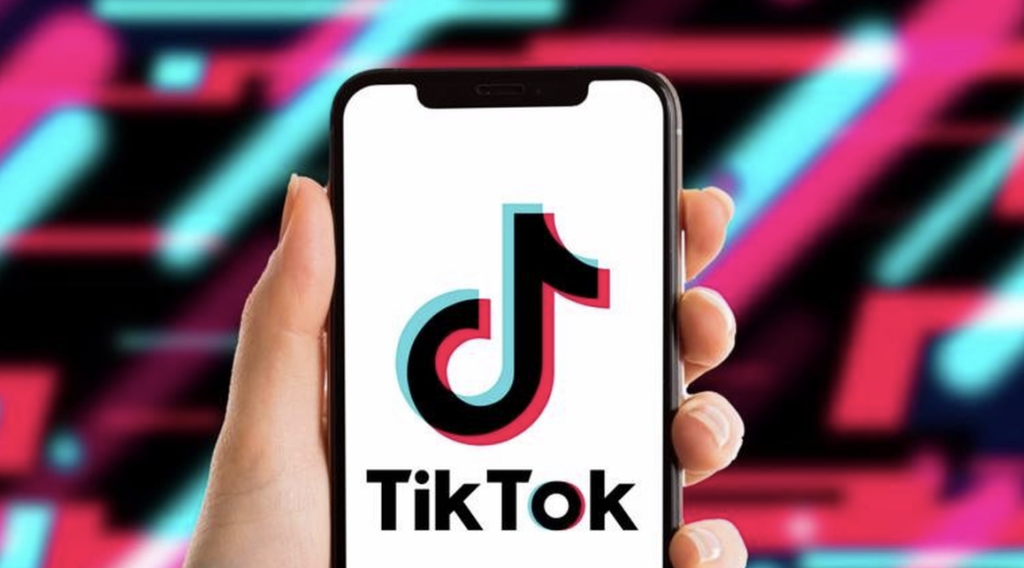
Content Management and Quality Control
One of the key challenges of using TikTok for education is content management and quality control. While TikTok provides a platform for creative, engaging educational content, maintaining the quality and accuracy of this information can be difficult.
Since content is user-generated, educators and institutions may struggle to monitor and ensure that the information shared is correct, relevant, and aligned with educational standards. Additionally, with the vast amount of content uploaded daily, it can be challenging to manage and organize educational material in a way that remains accessible and easy to find for learners.
Strategies for Using TikTok for Education
So how can educators monetize on the TikTok platform? Mega Digital highly recommends the followings:
1. Develop a Content Strategy Aligned with Educational Goals
To fully leverage TikTok for educational purposes, educators should adopt a strategic approach. Begin by developing a content plan that aligns with your teaching objectives. Each video should serve a clear purpose, such as explaining a topic, encouraging critical thinking, or sharing useful resources. This way, your TikTok content helps achieve real learning outcomes instead of just focusing on entertainment.
For example, if you’re teaching language skills, you could create a series of TikTok videos where each one introduces a new vocabulary word. In one video, you might explain the meaning of the word, in the next video, show it used in a sentence, and then follow up with a short quiz to engage viewers.
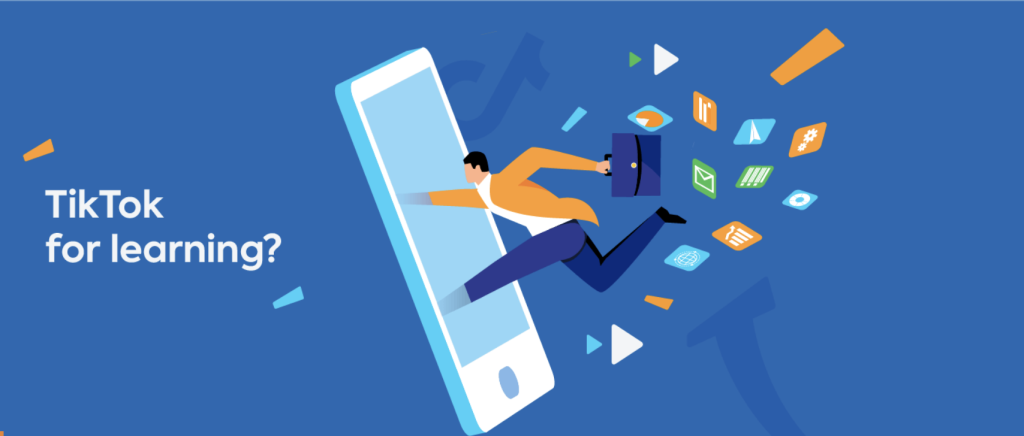
2. Build a Brand Identity Around Educational Value
To build a strong brand identity focused on educational value on TikTok, start by clearly defining your niche and target audience. Whether you’re a teacher specializing in math, science, or language, or an organization promoting broader learning, ensure your content consistently aligns with this niche. Create a recognizable visual style by using the same color schemes, logos, or fonts in all your videos. This consistency helps viewers immediately associate your content with your brand.
Next, develop a content strategy that reflects your educational mission. For example, if your goal is to promote critical thinking, structure your videos around thought-provoking questions or challenges. If you’re focusing on specific subjects, create series or playlists that build on previous lessons, offering progression in learning.
3. Segment Your Audience and Tailor Content
With a diverse user base, understanding whether your viewers are high school students, parents seeking educational activities, or lifelong learners allows you to create more relevant content. You should aim to create content tailored to each audience, their age group, and their learning objectives.
For example, if your audience includes high school students, parents, and lifelong learners, tailor your content to each group’s needs. Offer exam tips for students, hands-on learning activities for parents, and skill development content for adults.
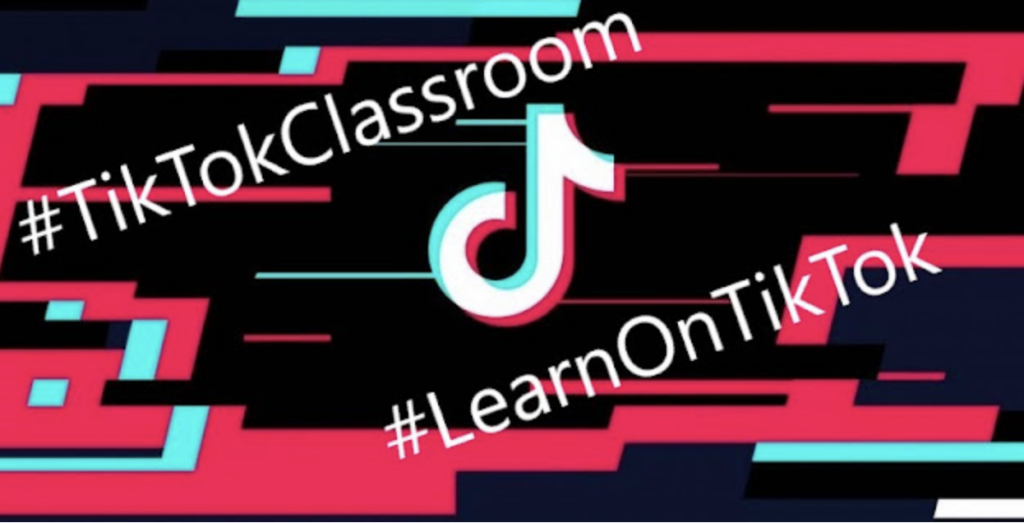
4. Establish Partnerships and Collaborations
By working with other educators, institutions, or influencers in the educational field, you can broaden your reach and strengthen your credibility. Collaborating introduces new ideas, and varied content, and gives access to wider audiences.
For instance, Khan Academy partnered with NASA to create a series of educational videos on space science and NASA’s missions. This collaboration aimed to provide free, high-quality learning resources and enhance understanding of space-related topics. The videos were integrated into the Khan Academy platform and promoted through both organizations’ channels. The initiative successfully reached millions of students worldwide and increased interest in STEM fields.
5. Create Scalable Learning Programs
Creating scalable learning programs is key to the long-term success of TikTok. While individual videos provide quick lessons, organizing your content into structured series or thematic programs offers a more comprehensive learning experience.
For instance, educators can develop video series that cover basic concepts, followed by more advanced lessons, allowing viewers to progress at their own pace. Additionally, using TikTok’s features like playlists and hashtags can help organize content into structured learning paths.
6. Explore Monetization Strategies Aligned with Educational Content
Educators can leverage tools like TikTok’s Creator Fund, brand partnerships, or sponsored content to generate income while maintaining the integrity of their educational mission. Another option is offering premium content through memberships, where followers can access exclusive lessons or in-depth tutorials.
Additionally, educators can promote their own courses, books, or learning materials, driving traffic to external platforms. Aligning monetization with educational goals ensures that content remains valuable and relevant to the audience while providing financial support for continued growth.
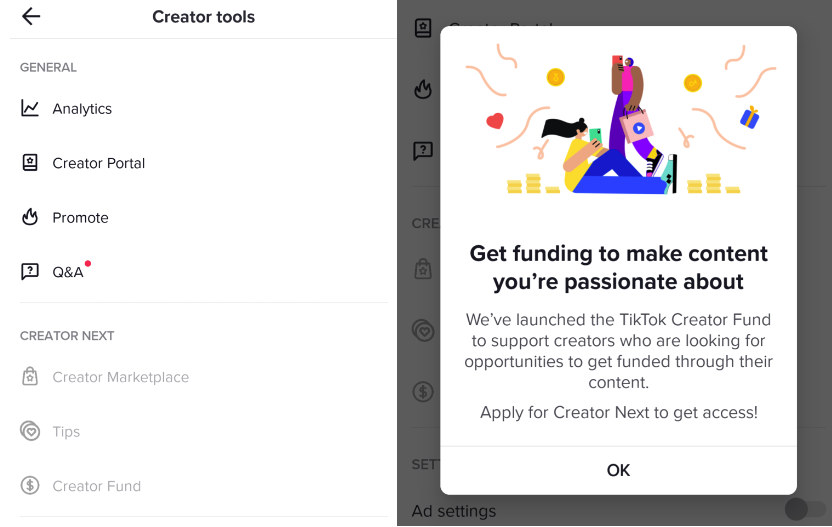
Best TikTok Ad Types for Promoting Education
TikTok provides several advertising options that can boost visibility, engage audiences, and generate revenue for educators. Mega Digital strongly recommends the following ad formats:
TikTok In-Feed Ads
Appearing in users’ “For You” feed, In-Feed Ads blend naturally with organic content, making them ideal for educational promotion. Educators can use this format to deliver engaging, bite-sized lessons or promote courses while encouraging action with clear call-to-actions like “Sign up” or “Learn more.” This seamless integration allows educational content to reach a broader audience without interrupting the user experience.
Branded Hashtag Challenges
With Branded Hashtag Challenges, educators can boost user engagement by prompting participants to share their learning experiences or join fun, educational activities such as math challenges or science experiments. This interactive format helps create a sense of community around learning, encouraging content creation and expanding reach as users participate and share their own content around the challenge.
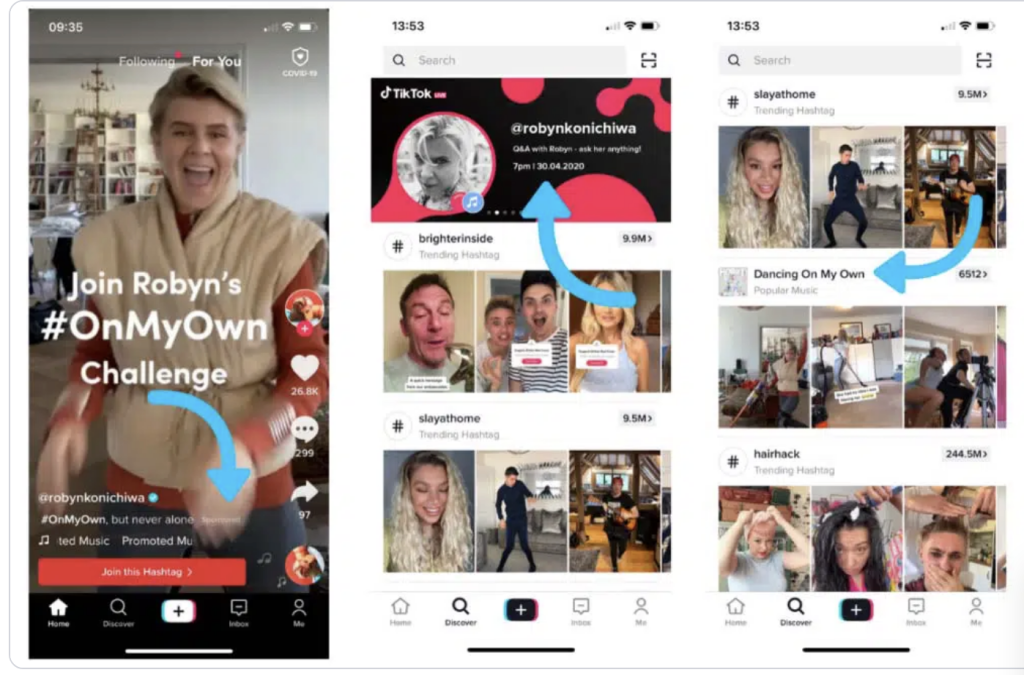
Branded Effects
Branded Effects allow educators to create custom filters, stickers, and augmented reality (AR) features. These interactive elements enhance educational content, making learning more enjoyable and engaging. For example, educators can develop AR effects related to their subject matter—like interactive flashcards or vocabulary filters for language learning—which invite users to participate while reinforcing educational concepts in a fun, memorable way.

Spark Ads
Rather than focusing on purely promotional content, Spark Ads amplify existing organic content or user-generated videos related to educational programs. This format helps educators build credibility and trust by boosting authentic content that already resonates with the audience, making it feel more genuine and engaging compared to traditional ads.
How to Optimize Educational Content on TikTok?
To effectively leverage TikTok for educational content, optimizing your posts is essential. Here are some key strategies to enhance your educational videos and boost their impact and reach on the platform:
Keep Lessons Short and Engaging
TikTok works well with short, attention-grabbing content. By sharing educational material in quick, interesting segments, teachers can keep students focused and make the content easier to understand.
For instance, a coach might produce a 60-second clip explaining a key strategy for increasing online sales, such as optimizing product listings. Using clear visuals and actionable tips ensures the content is digestible and maintains viewer interest.
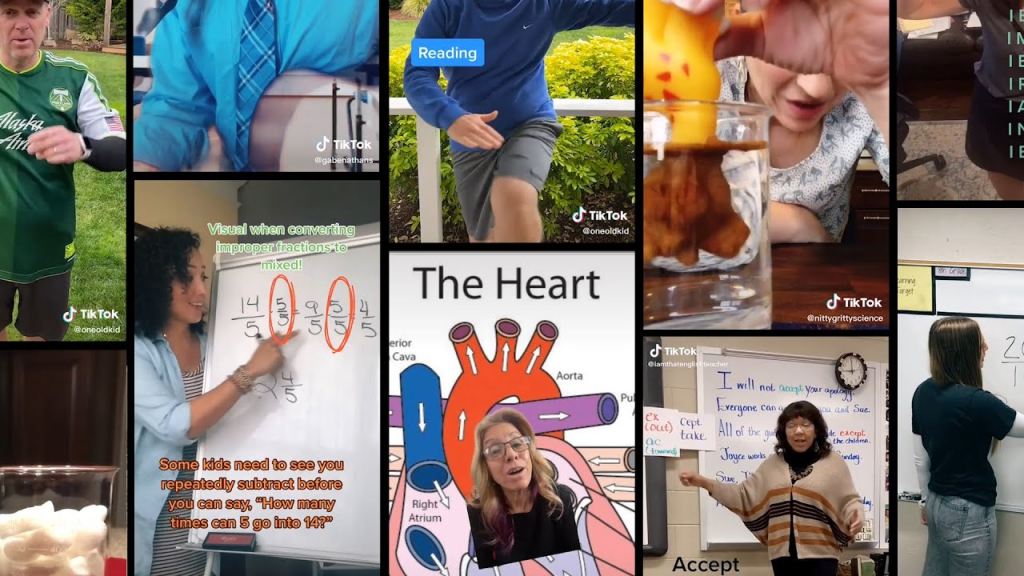
Create Educational Series
Educational series are a great way to organize learning by breaking down complex topics into bite-sized, manageable pieces. Teachers can build on previous lessons, making it easier for students to follow along and retain information.
For example, an e-commerce coach could create a series on how to build an online store, with each video focusing on a different topic like market research, product selection, or digital marketing strategies.
Optimize Videos for Mobile Learning
According to TikTok’s Official Blog, around 80% of users access TikTok via mobile devices. This highlights the need for educators to optimize videos for mobile learning by using vertical formats, ensuring clear visuals, and incorporating interactive elements suited for smartphones and tablets. By focusing on mobile-friendly content, educators can effectively reach and engage the majority of TikTok users.
Enhance Learning with Trending Sounds
Leveraging popular audio tracks or sound effects can make educational videos more appealing and relatable to viewers. By integrating these elements into lessons, teachers can align their educational content with current trends, enhancing its attractiveness and shareability. These teachers could incorporate a popular sound to explain a key tip for increasing conversion rates, making the video more relatable and engaging. Integrating trending audio helps align the content with current trends, boosting its shareability.
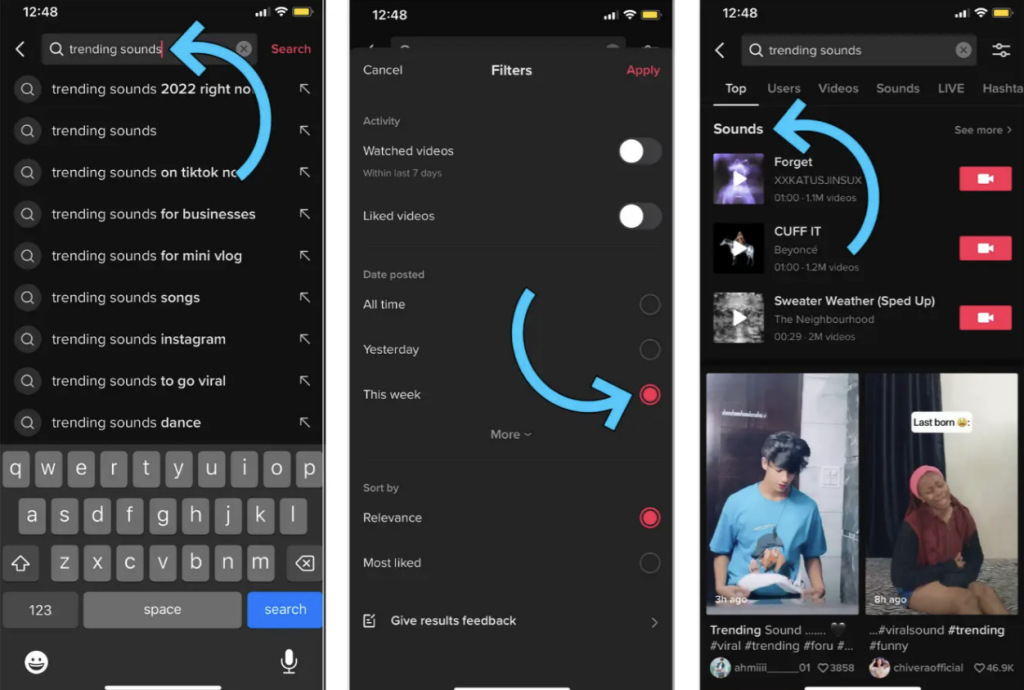
Case studies: Famous education channel on TikTok
Several TikTok educators have created highly impactful content, with many success stories to highlight. Below are two of the most exceptional examples we identified on TikTok.
Antonio Parlati (@antonioparlati)
Antonio Parlati, with over 6 million followers on TikTok, is an Italian polyglot and education content creator known for his engaging language-learning content on platforms like TikTok and YouTube. Antonio has gained widespread recognition for his unique approach to teaching English, particularly to Italian speakers. He began his TikTok journey in late 2020, and his content quickly gained traction, especially his “Pronunciation Challenge” videos, one of which went viral in 2021 with over 3 million views.
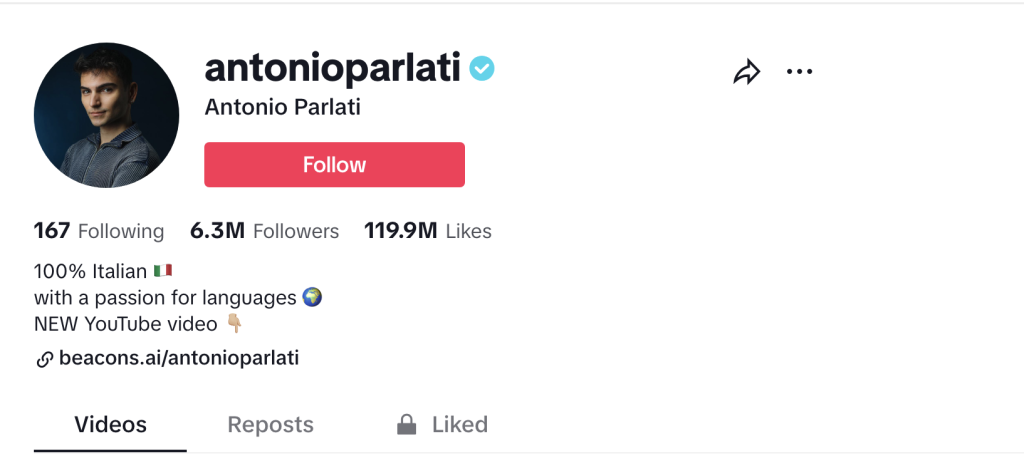
Tony Kaizen (@realenglishradio)
Real English Radio, led by Tony Kaizen, is a platform for intermediate and advanced English learners, boasting over 1.5 million TikTok followers. It provides real spoken English in practical contexts, covering topics like business, relationships, and communication. Tony focuses on teaching common slang and phrases people actually use, making it a valuable resource for improving fluency.
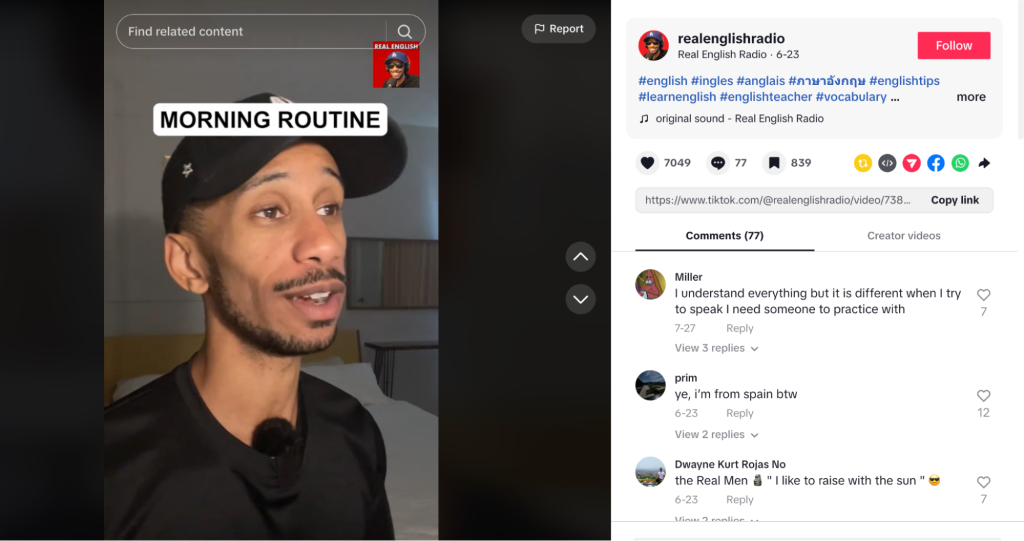
The TikTok channel of Real English Radio features content that blends education with entertainment, often using hashtags like #fyp and #viral to reach a broader audience. Additionally, the channel has produced over 833 videos with more than 95 million views, showcasing its popularity and effectiveness in teaching English in a relatable way.
>>> Read more: TikTok for Nonprofits: How to Raise Funds on TikTok
Conclusion
In conclusion, using TikTok for teachers is a powerful way to expand their audience, engage with them, and monetize their content. By utilizing different ad formats and staying updated on the latest trends, teachers can boost both their visibility and income. To thrive on this platform, consider implementing these TikTok strategies for teachers today. Best of luck with your advertising!







